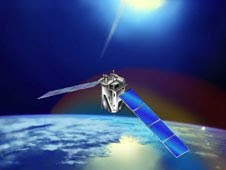
NASA has selected three proposals as candidates for the agency's next space venture to another celestial body in our solar system. The final project selected in mid-2011 may provide a better understanding of Earth's formation or perhaps the origin of life on our planet.
The proposed missions would probe the atmosphere and crust of Venus; return a piece of a near-Earth asteroid for analysis; or drop a robotic lander into a basin at the moon's south pole to return lunar rocks back to Earth for study.
NASA will select one proposal for full development after detailed mission concept studies are completed and reviewed. The studies begin during 2010, and the selected mission must be ready for launch no later than Dec. 30, 2018. Mission cost, excluding the launch vehicle, is limited to $650 million.
"These are projects that inspire and excite young scientists, engineers and the public," said Ed Weiler, associate administrator for the Science Mission Directorate at NASA Headquarters in Washington. "These three proposals provide the best science value among eight submitted to NASA this year."
Each proposal team initially will receive approximately $3.3 million in 2010 to conduct a 12-month mission concept study that focuses on implementation feasibility, cost, management and technical plans. Studies also will include plans for educational outreach and small business opportunities.





 A network of cameras deployed around the Arctic in support of NASA's THEMIS mission has made a startling discovery about the Northern Lights. Sometimes, vast curtains of aurora borealis collide, producing spectacular outbursts of light. Movies of the phenomenon were unveiled at the Fall Meeting of the American Geophysical Union today in San Francisco.
A network of cameras deployed around the Arctic in support of NASA's THEMIS mission has made a startling discovery about the Northern Lights. Sometimes, vast curtains of aurora borealis collide, producing spectacular outbursts of light. Movies of the phenomenon were unveiled at the Fall Meeting of the American Geophysical Union today in San Francisco.








